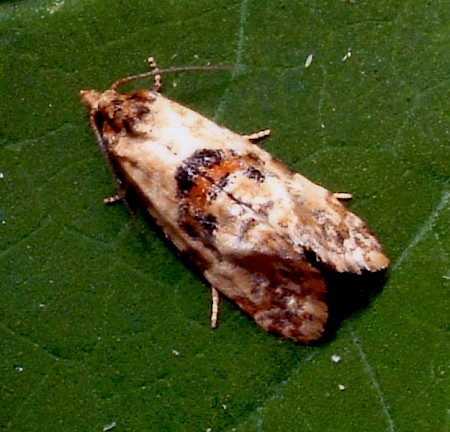49.138 BF964a
Ox-tongue Conch Neocochylis molliculana
Zeller, 1847
Wingspan 11–15 mm.
A native species of southern Europe, the Ox-tongue Conch has steadily migrated north over the last few decades. Its appearance in Britain was first recorded at Portland in 1993 and it has since colonized vast regions of southern England’s coastline. This moth frequents rough grassland, scrub, and waste ground where bristly ox-tongue (Helminthotheca echioides) grows.
Its ivory forewings are dappled with patches of brown and buff, along with small clusters of black stippling. Marking the front edge of each forewing are two dark blotches, mottled with buff scales. At the middle of each forewing is a red-brown mark, outlined by an irregular blackish band. The hindwings are pale brown.
This species lays two broods of eggs in the flowerheads of bristly ox-tongue, the first in late spring and the second from July to September. Its pale yellow larvae feed on the seeds of the plant. The first generation remain on the seedhead to pupate, emerging as adults in late July and staying active until September. Generation two leave their home for the leaf litter below, spinning cocoons and overwintering until spring. They pupate in May with adults on the wing until the end of June.
The Ox-tongue Conch flies at night, resting on the leaves of its food plant during the day.
Description: Michela Sisti

 UKMoths
UKMoths 

